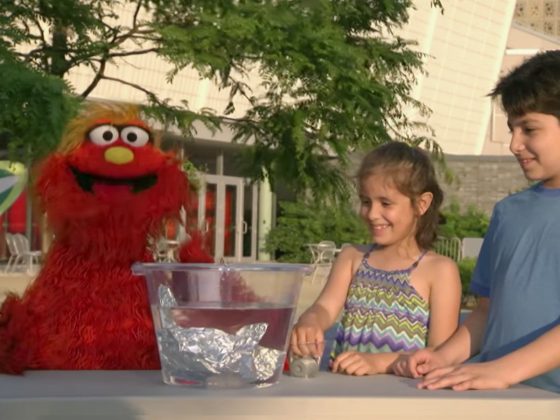
Experimenting With Boats
Talk about scientific experiments and their steps.
Together, watch Murray and his friends create bridges that can hold weight. They each design, discovering that some shapes make stronger bridges. Ask:
- “How did Murray and his friends use materials to build a bridge?”
- “Why is it important for a bridge to carry, or hold, a lot of weight?”
- “Which bridge design held the most weight?”
Help children talk about experiments, explaining that an experiment is a test that is set up the same way each time, with just one thing changing. In an experiment, we try out different ideas in order to answer a question. An experiment has different steps:
- An experiment usually begins by observing something interesting, asking a question about it, and making a hypothesis (a thoughtful guess or explanation to answer the question).
- Then we do an experiment and notice what happens.
- Next comes recording (writing down) and analyzing (thinking about) the findings. (This means observing closely. Encourage children to say “I notice…” and “I wonder…” about what they see around them and collect information by drawing or writing down what they see.) Recording and analyzing results let people to look at information and decide what it may mean.
- After reviewing results, it’s time to make a conclusion based on the evidence (what we observe). Counting and comparing will help children analyze the results of the experiment.
- Last, we report the findings. The results can help us make decisions, like how to build boats.
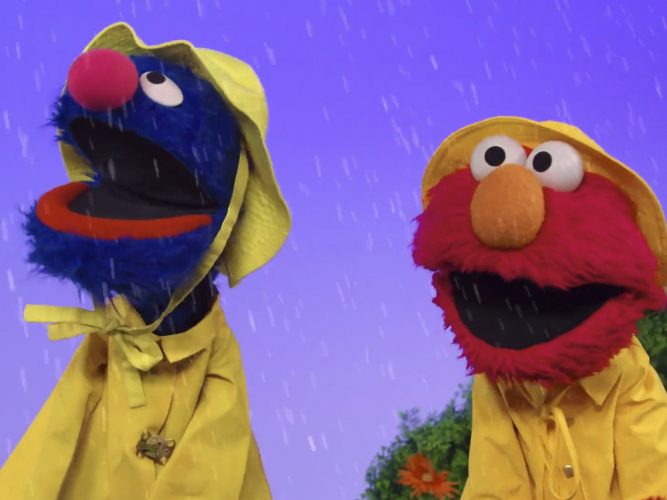
I Love the Rain
Watch Elmo and Grover sing about how rain helps Earth’s people, animals, and plants live and grow.
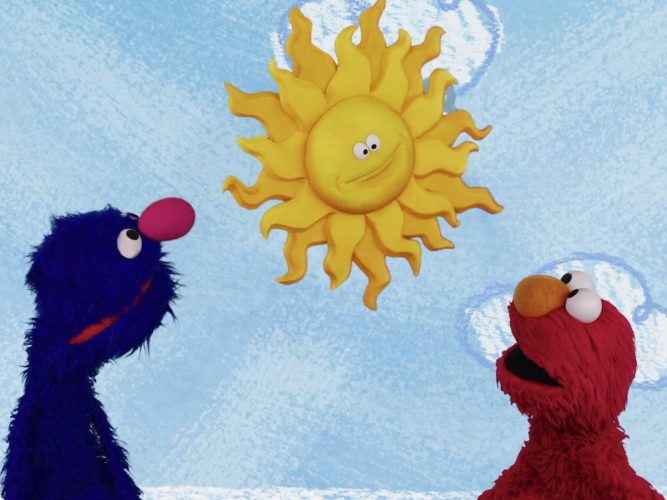
Elmo’s Wonderful World: Sun
Learn about our sun—a star that provides warmth, light, and energy for plants, insects, animals, and people to live and grow.
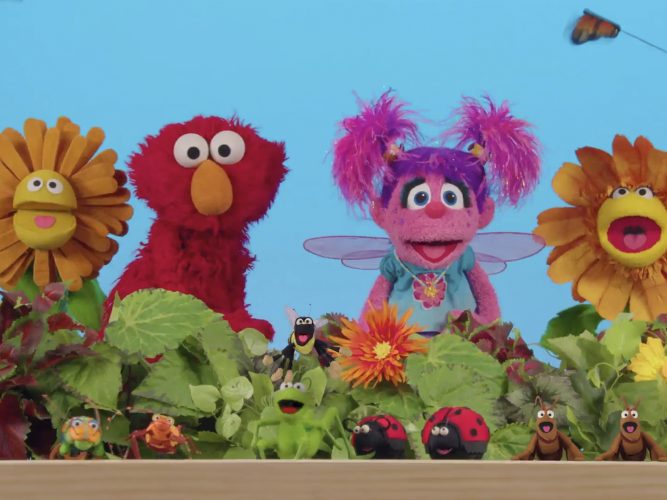
Bug Boogie
Sing and dance with Elmo, Abby, and some bug pals and learn the wonderful things that insects do for plants and gardens.
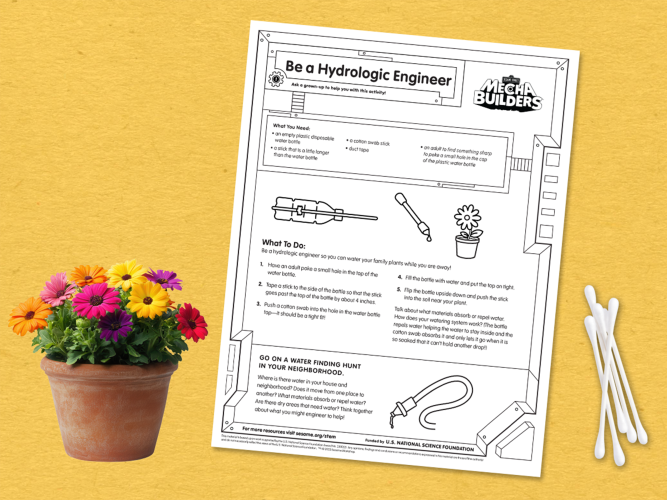
Be a Hydrologic Engineer
Be a hydrologic engineer, so you can water your family plants while you are away!
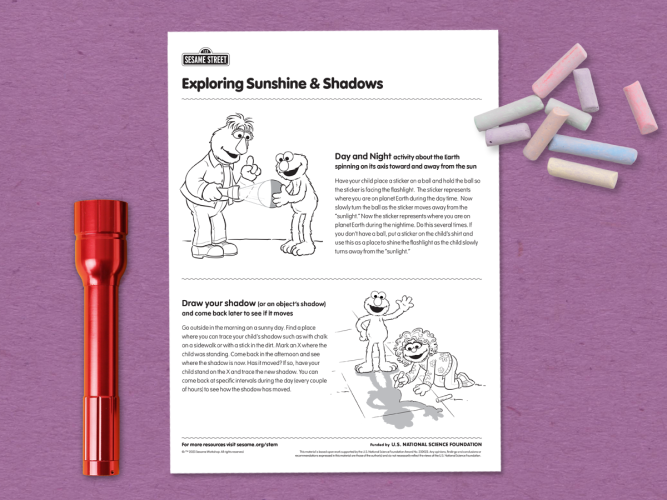
Exploring Sunshine & Shadows
A fun science experiment for kids to learn about the sun.
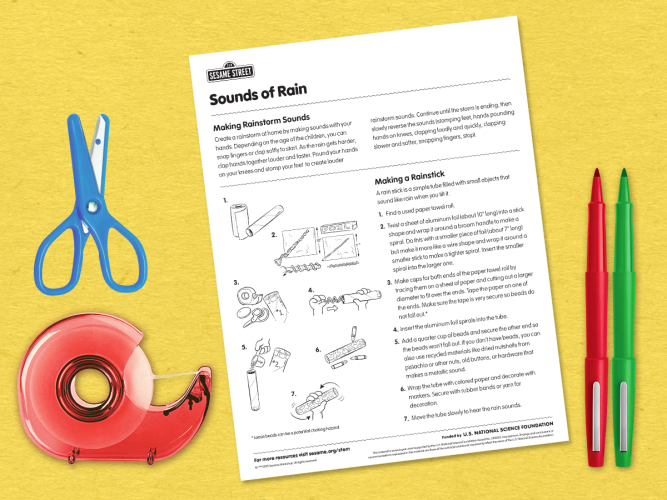
Sounds of Rain
You and your child can create the many sounds of a rainstorm through play and arts and crafts!
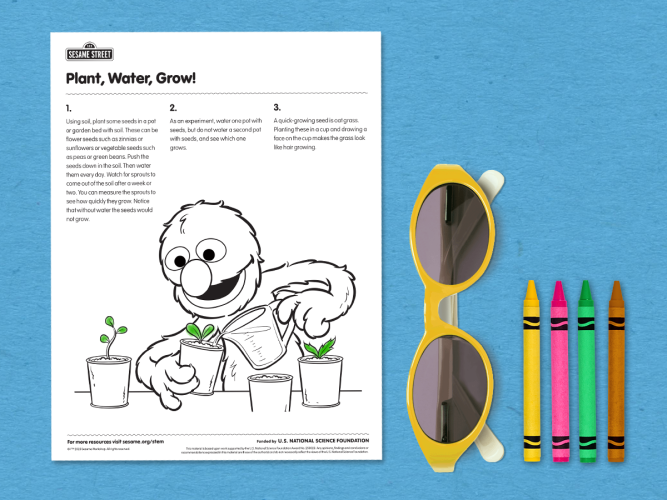
Plant, Water, Grow!
Use this fun science experiment to teach kids about how plants grow.
